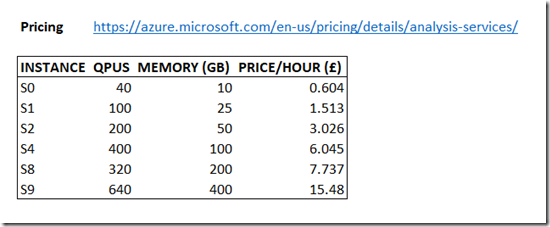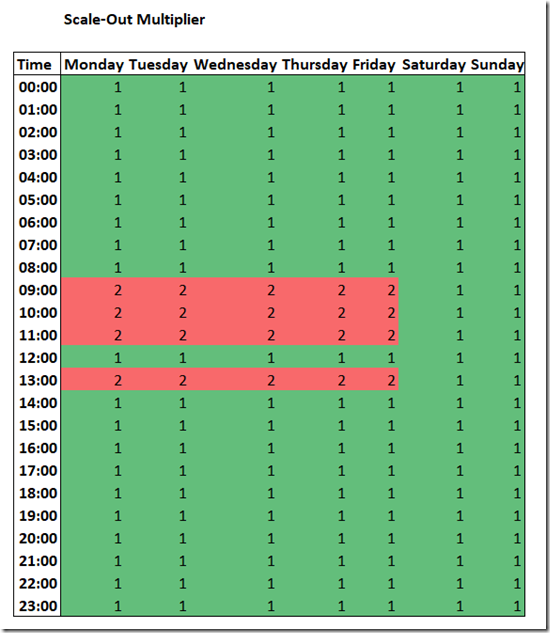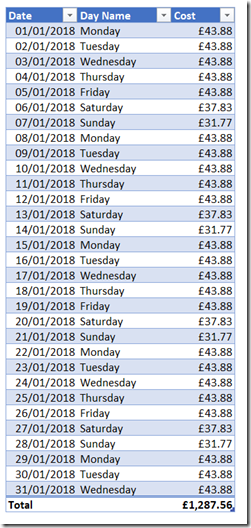How Much Does Azure Analysis Services Actually Cost?
Reposted from Chris Webb's blog with the author's permission.
It might seem strange to write a blog post on how much Azure Analysis Services costs when there is a page on the Microsoft site that very clearly lists all of the SKUs and how much they cost per hour or per month in any currency and Azure region you choose:
https://azure.microsoft.com/en-gb/pricing/details/analysis-services/
The prices you see here are somewhat misleading though. They’re not wrong, but they do not challenge the assumption that you will use Azure Analysis Services in the same way as an on-premises instance and therefore they allow you to make further, incorrect assumptions about cost. A lot of my customers look at the monthly cost and assume that’s what they will actually be paying monthly – and more often than not come to the conclusion that Azure Analysis Services is too expensive for them. In fact the situation is a lot more complex and Azure Analysis Services (especially at the enterprise level) might end up being cheaper than you think. Let me explain why.
The workload of any Analysis Services instance, whether on-premises or in Azure, varies a lot. For example:
- It will be busy during office hours while users are running queries but much quieter at night when most users have gone home
- Similarly, it will be busy during the week when most users are working and much quieter on weekends and public holidays
- It will be busy at certain times, such as month-ends or Black Friday, when more reports need to be run
- It will be much busier (often with both CPU and memory usage at their peak) when processing is taking place
When you are planning an on-premises deployment of Analysis Services you need to specify your hardware and licensing so as to be able to handle these periods of high usage, even if for most of the time usage is a lot lower. This means that enterprise-level deployments of Analysis Services can be expensive because you need servers with a large number of cores and a lot of RAM and you may also need to use network load-balancing to scale out over several servers.
On the other hand Azure Analysis Services is able to scale up and scale out on demand, and you only pay for what you use. Scaling up means moving to a higher performance level (ie a SKU) within a service tier, or even moving up a service tier. Scaling out means adding replicas of your existing Azure AS instance and database.
Broadly speaking you need to scale up in two scenarios:
- To handle the need for more memory and more QPUs while you are processing
- To handle increased data volumes, either as a result of new tables being added to the model or because the size of existing tables has increased over time
You need to scale out when:
- You need to process during times when other users are running queries, to ensure that query performance is not affected
- You need to handle an increased number of concurrent users running queries
Bill Anton has an excellent blog post covering this question in a lot more detail here:
http://byobi.com/2017/11/when-to-scale-up-or-scale-out-with-azure-analysis-services/
One other thing to point out is that if you pause an instance of Azure Analysis Services you pay absolutely nothing.
What does this mean for the cost of Azure Analysis Services? Basically, if you’re taking advantage of these features you won’t pay one of the monthly prices quoted on the pricing page linked to at the top of this post. Instead you may do things like:
- Scale up for one hour every day when you need to process your SSAS database, just to get the extra memory and QPUs needed, then scale down when processing has finished
- Scale out only on certain days, or certain times of day, to handle increased numbers of users
- Pause your instance when you are sure that no-one needs to run queries
How do you then calculate the likely cost? For my Azure Analysis Services precon at SQLBits a few months ago I built an Excel workbook that shows how to go about this. First, there is a table with the hourly costs for S-level instances in GBP:
Then there is a table with one cell for every hour of every day of the week, with the performance level required for that hour. In this example most of the time an S1 instance is required except for at midnight every night where processing is taking place and an S2 is needed. For four hours on Sunday morning the instance is paused.
Next there is a similar table showing the number of scale-out replicas needed for each hour of each day. In this case scale-out is needed for four hours of the day, Monday to Friday, to handle a larger number of concurrent users:
Next, the data from these three tables is brought together to calculate the cost per hour for each day of the week:
Finally, for a given month the actual cost per day can be calculated (which of course varies by the number of weekdays, weekends and maybe also public holidays), resulting in the true monthly cost:
In this example the monthly cost for January 2018 is £1287.56, which is only slightly more than the £1104.48 you would pay to have an S1 instance for a whole month. You can download a copy of the workbook here.
In summary, my point here is that pricing an implementation of Azure Analysis Services is complex because of its flexibility. I am not saying that Azure Analysis Services is cheap, or cheaper than using Analysis Services on a VM in Azure or on premises – that’s a subject for a completely separate discussion. Hopefully, though, this post gives you a better idea of how much you might pay if you do use Azure Analysis Services for a project.
UPDATE 10th June 2017: the number of query replicas for scale-out has been limited by Azure region, so choosing the right Azure region is very important if you do need to scale out. The documentation is here: https://docs.microsoft.com/en-us/azure/analysis-services/analysis-services-overview#availability-by-region
 |
Chris has been working with Microsoft BI tools since he started using beta 3 of OLAP Services back in the late 90s. Since then he has worked with Analysis Services in a number of roles (including three years spent with Microsoft Consulting Services) and he is now an independent consultant specialising in complex MDX, Analysis Services cube design and Analysis Services query performance problems. His company website can be found at http://www.crossjoin.co.uk and his blog can be found at http://cwebbbi.wordpress.com/ . |





